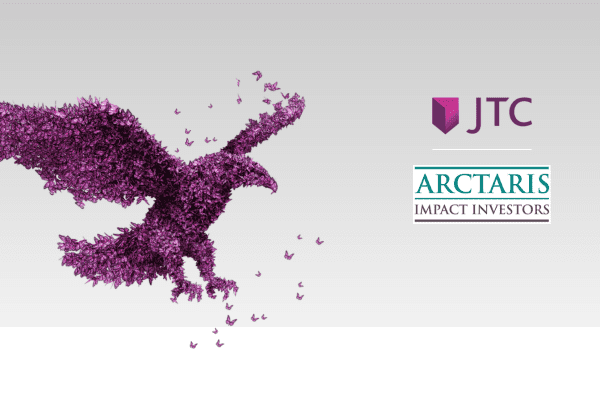How Arctaris’ experience investing in operating businesses provided an advantage in the OZ space
The JTC Impact Medallion Program recognizes impact fund managers and industry stakeholders who embrace best practices in security, transparency, and compliance. In this series, we’ll showcase Impact Medallion recipients and how they’re leading the way on Impact.
While Opportunity Zones have generated a great deal of investment, OZ proponents have found it challenging to direct that investment to rural projects and operating businesses as opposed to real estate. These types of investments are critical to creating real impact in OZs, which is why it’s important to hear from those who’ve found success with them.
Founded in 2009, Arctaris Impact Investors, LLC, is a Boston-based impact investment firm with more than a decade of experience in both debt and equity investments, with funds that invest in growth-oriented operating businesses and community infrastructure projects located in underserved communities.
We spoke with the Arctaris team about how the company’s experience gave it an edge when Opportunity Zones were created, bolstering the reputation of OZ, and why being a positive force in the community is good for business.
Impact investing is often saddled with the argument of “impact vs. returns,” namely that to make an impact, you have to give up on generating competitive returns. How do you combat this perception? Are investors coming around to the idea that it’s possible to do both?
Bornstein: We are finding that investors are beginning to embrace the idea that investing can deliver both returns and impact. We seek to demonstrate, through measurable means, that investors can obtain “impact and returns” not “impact vs. returns.”
Over 13+ years, Arctaris has stated its policy of Doing Good and Doing Well, as our team completed investments that exemplify these goals. In short, it means simultaneously doing good in underserved communities and doing well for our investors. Arctaris has always focused on investing in this integrated manner to deliver higher returns and higher impact.
Arctaris employs a host of impact investment strategies that help to drive higher returns. First, thanks to our track record in identifying opportunities in underserved communities, our funds are able to secure guarantees and first-loss capital from government and foundation partners. These partnerships provide a significant economic benefit: downside protection for our investors. Second, we often secure additional subsidies at the deal level, structured to provide additional downside protection for a particular transaction. Third, our operating businesses, infrastructure and real estate frequently demonstrate commercial benefits because of the positive roles they play in their communities; for instance, in securing and retaining loyal customers, employees or tenants. Indeed, doing good is good for business.
Arctaris specifically targets investments that offer community benefits as well as financial subsidies. We turn down many opportunities that present high returns but lack in social, economic, and environmental impact, or vice versa. Arctaris seeks to find the investments that deliver both. We aim for higher returns with the benefit of impact, not in spite of impact.
Of course, keeping the balance between impact and returns is an exercise in dynamic portfolio management. The simple fact is that achieving investment success helps create a stronger balance sheet and additional liquidity to deliver, in turn, higher community impact. It is our conviction that these two factors work together hand in hand.
Different investors have different priorities and varying levels of knowledge. What have you found about Opportunity Zone investors – do they know a lot about the program going in, or do you have to explain OZ to them? Are they more concerned with impact, or tax breaks? How do you cater to investors with different goals?
Bornstein: We have found that knowledge of the Opportunity Zone program is varied. Many prospective investors are quite informed about OZs while others have a more high-level understanding.
Most investors are aware of the tax deferral to 2026 and tax-free gains after the 10th year of investment. We have found that it is helpful to detail how investors can also utilize bonus depreciation and Qualified Small Business Stock (QSBS), which are additional benefits that our OZ funds provide because we also invest in infrastructure and private equity operating companies vs. only real estate.
Opportunity Zones have largely been associated with real estate, with some finding it difficult to identify quality investments in operating businesses in OZ tracts. What are some of the challenges of OZ investing in operating businesses, and how can funds make these projects viable?
Bornstein: Great question. Arctaris has been investing in private operating businesses located in low-income census tracts since its founding in 2009 and it is one of our core competencies. Thus, when the Opportunity Zone legislation was passed, we felt it was a natural fit for the organization and we had an edge. Our ability to source, diligence and partner with operating businesses is why we are one of a small number of QOFs that invest outside of pure real estate [Novogradac estimated that over 95% of QOF investments are real estate only].
Because of our commitment to positive community impact and our focus on economic development, we have historically attracted higher volumes of deal flow and higher quality opportunities than many traditional private equity funds that seek to invest in OZs. Referrals often originate from commercial banks and economic development agencies. Additionally, prospective deals may originate from internal members (Arctaris partners and investment team members) as well as the firm’s external constituents (representatives from banks, advisory board members, venture partners and operating partners).
Not only does Arctaris Impact’s focus on impact and economic development help limit competition from funds which do not have a similar focus, but also it concentrates our ability to close on the deals we choose to pursue. Overall, the Arctaris business model is strengthened by the firm’s ability to utilize its economic development role to source deal flow efficiently.
One major criticism of OZ has been that too much of the investment has been directed at a small percentage of available tracts. Do you think potential legislation to eliminate some tracts and redraw the OZ map could help with this problem? What about legislation requiring social impact reporting – could this help improve OZ’s reputation?
Bornstein: We believe the planned amendments to Opportunity Zone (“OZ”) legislation, including the potential to eliminate and redraw the OZ map, could make the program more attractive to investors while also enhancing impact for the underserved communities that present the greatest need for capital.
Further, Arctaris is supportive of the requirement for impact reporting and believes that this can bolster support and the reputation of the OZ program at large. In fact, impact reporting is a core value at Arctaris, and we have been providing this in one form or another to our government and foundation partners (First-Loss Capital partners) for many years. We currently partner with the experts at the Initiative for a Competitive Inner City (“ICIC”) to support impact investment strategy development, program implementation, impact reporting capabilities, and execution against our stated policies and goals. Earlier this year, we issued our 2021 Annual Impact Report.
Benjamin J. Bornstein has participated in several of our webinars over the years, covering topics like measuring social impact in Opportunity Zones and attracting social impact capital. Are events like these useful in getting a sense of where interest lies in the broader industry and where sectors like OZ need to do a better job of educating?
Bornstein: Yes, we’ve been big supporters of spreading industry knowledge regarding Opportunity Zones (OZs) and impact investing in underserved communities. Forums such as JTC’s webinars have been instrumental in ensuring that investors have the depth of knowledge required to effectively invest in the OZ space. As the OZ legislation does not include formal impact metrics, it’s imperative on those funds investing in the space to highlight measurable change from their underlying investments. For Arctaris, we place a particular emphasis on living-wage job creation. As we have in the past, Arctaris would continue to welcome the opportunity to participate in future webinars to discuss the intricacies of the OZ program and how to navigate this intriguing investment sector.
JTC has been a leader in fund administration for Opportunity Zones since the program’s inception, pioneering techniques for social impact reporting and methods for comparing investments with different impact goals.
Stay Connected
Stay up to date with expert insights, latest updates and exclusive content.
Discover more
Stay informed with JTC’s latest news, reports, thought leadership, and industry insights.
Let’s Bring Your Vision to Life
From 2,300 employee owners to 14,000+ clients, our journey is marked by stability and success.



















